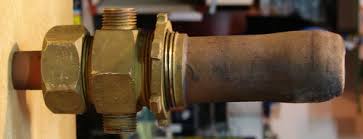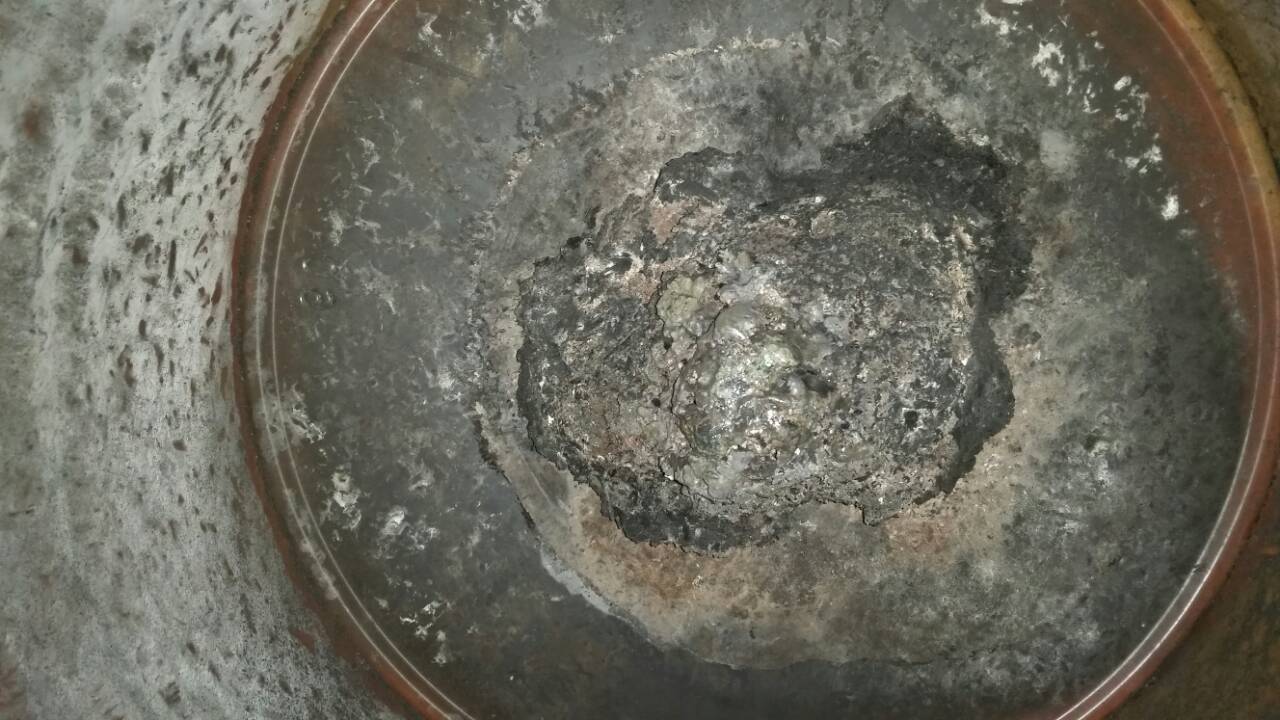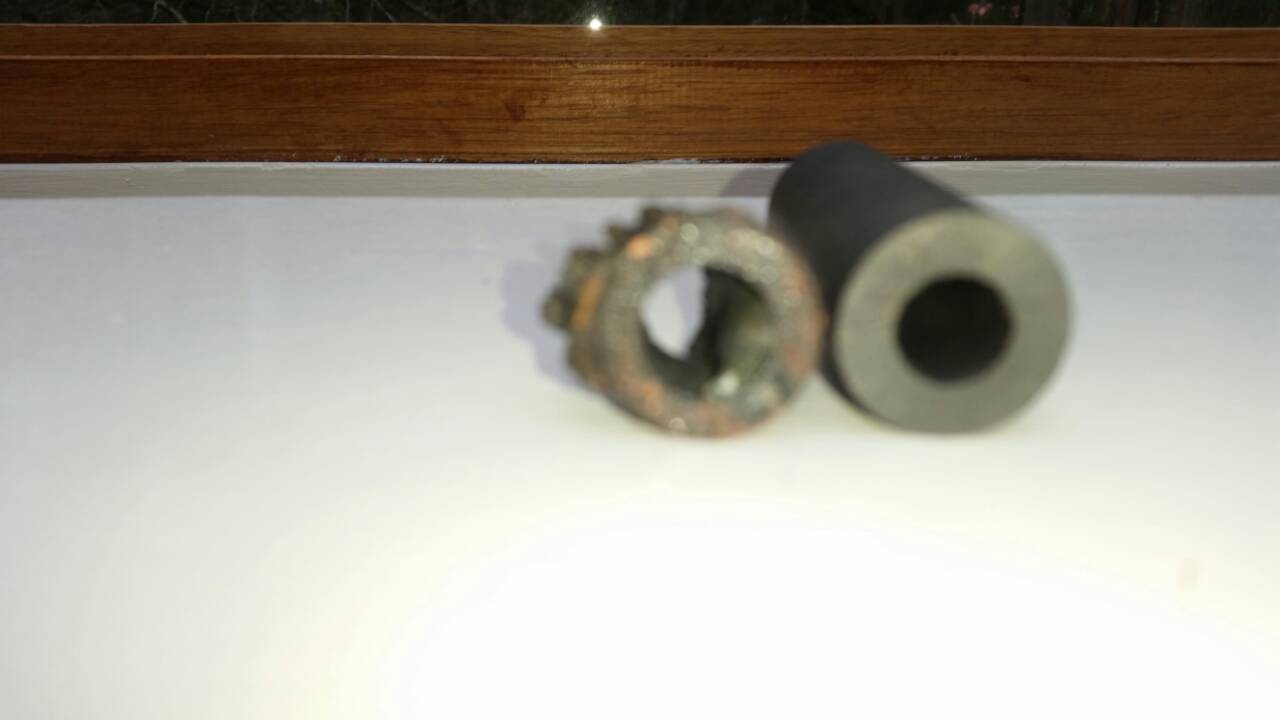I think I know where this question comes from. Carbon has the highest melting point of any element, and we use clay-graphite crucubles in foundry. How can this be?
In a melting furnace we are carefull to keep our air and fuel mixtures stoichiometric. And at high temperature the clay (usually alumina) melts and surrounds the particles of graphite protecting them from oxygen.
Koen is logically correct, Carbon DOES burn in he presence of oxygen. However, practical experience would seem to tell us that a clay-graphite a nozzle might actually work.
We also use crucibles made of silicon carbide.
Crucibles have traditionally been made using pottery making methods, so I suspect that these nozzles could be made by an amature potter.
Rindert
Thank you Rindert. Does that mean the composition of commonly used graphite rods in industrial processes/furnaces is different from that of crucibles, and therefore would not work as a nozzle? Another question would be, if anyone in this forum has tried this, or a molded clay graphite mix. Thank you in advance for sharing your knowledge and experience
there is no better way to find out… just DO it 
i am always happy if my prediction is wrong. it did mean i learned something by doing it wrong…
At some point heat must be retained at other points its preferable to dissipate …
The fun part is finding those points…
If i find some graphite, i will test it… even just for the fun of it… but i can’t afford the diamond test…
Hi Tarek, Like Koen says, “just do it”  A graphite nozzle will easily burn up in a charcoal gasifier. I’ve watched graphite crucibles burn up in my forge when using them to melt metal over the fire and that was not as intense a heat as a nozzle has to endure. So far as a graphite/clay mix, I’ll do you one better. Just using fire clay in a charcoal gasifier will literally melt the clay. You have to cool the nozzle down by adding liquid vapors or engine exhaust gas. I’m anxious to see how those boron/tungsten nozzles work out. That may be a better option.
A graphite nozzle will easily burn up in a charcoal gasifier. I’ve watched graphite crucibles burn up in my forge when using them to melt metal over the fire and that was not as intense a heat as a nozzle has to endure. So far as a graphite/clay mix, I’ll do you one better. Just using fire clay in a charcoal gasifier will literally melt the clay. You have to cool the nozzle down by adding liquid vapors or engine exhaust gas. I’m anxious to see how those boron/tungsten nozzles work out. That may be a better option.
Gary in PA
Yes, those graphite rods conduct electricty dirrectly to the melt. This is a way of using ‘resistance heating’ to more efficiently transfer energy to a large mass of molten material. Silicon for electronics is commonly processed this way. This is done in a ‘reducing atmosphere’ usually meaning it is mostly carbon monoxide, so the electrodes do not burn away as fast. but they are considered ‘consumables’.
The crucibles used in a small foundry (less than 5 ton per day) are much like clay cooking pots. Heat is transfered through the wall. luckygen1001 on youtube has a very good series of videos about exactly how things are done in a micro scale foundry. Budget Casting Supply (https://www.budgetcastingsupply.com/category-s/1858.htm) has several types of crucible for sale. That’s all background information. I would start by talking to amature potters in my area, and ask them if they know of anyone who might be able to fire clay-graphite or silicon carbide.
I don’t know where to find the unfired material. I looked at machinable ceramic at the Mcmaster-Carr website. Ultra-High-Temperature Easy-to-Machine Alumina Ceramic Rods 3000F looked interesting. But $576 for 1.5x12" rod. Nuts!!!
I’m going to talk to other metal casters and see if they can point me in a more prouctive direction.
Rindert
https://www.coorstek.com/english/materials/technical-ceramics/silicon-carbide/
I’m sure these guys could make us up a SiC nozzle, for 20-30K dollars. LOL
I used to work there. Stay away!!!
Rindert
Just search Silicon Carbide Thermocouple Protection Tubes, also called: Thermowells and Thermocouple Sheaths. There seem to be a lot of these out there. I don’t work for A.S. Richards and I’m not getting paid or anything like that, but these silicon carbide thermocouple protection tubes seem interesting to me. I think maybe a tungsten carbide tool could be used to make holes in them, maybe a hammer drill.
Rindert
Just a little update on the boron carbide nozzle i put into my gasifier towards the end of july .
I had intended taking it out about 2 weeks ago when the replacement nozzle arrived , trouble is the shut off valve on the end of the nozzle pipe is still cold to the touch after about 4 hours running , and thats telling me its still intact and because i am still getting good gas and it flares up within 2 mins of lighting ,i have decided leaving it in untouched until such time its unusable .
I still run it most days during the week ,but the past week we have been getting sunny days and so only run gasifier maybe for 2 hours or while i am doing heavier work like cutting wood and laundry so keeping the batteries topped up .
so far so good as they say .
Dave
It is great for me to hear “I’m using it daily” to make power for me and mine, reports Dave.
Mr pepe in far upper NYstate just recently posted up the same sentiment about his electrical generator supplying woodgasifier system.
Regards
tree-farmer Steve unruh
Ha ! ok speak too soon and you get your wish , yesterday’s daily run , i noticed no orange glow from the lighting/nozzle tube after putting the gas torch to it for 10 seconds ,normaly after pointing the gas gun under the drum for a few seconds i put my hand under the tube and see a reflection of the glow on my hand, but yesterday nothing , but i knew it was alight as i was getting gas and a flare from the other end after 2 mins , and engine fired up and ran for about 2 or 3 hours .
This morning i have emptied out about 100 litres of charcoal from the drum leaving a very pretty volcano on the bottom of my drum and covering up my boron carbide nozzle , anyway after carefully tapping away at my glass volcano i ended up with what is left of the Boron carbide nozzle all 1/2 inch of it , this first one was 1 and a half inches in length , so thats lasted inside 45days , and i worked out that would have been roughly 30 days running @ a average hourly rate of 4 hours , and thats about length of time i was getting from my home made refractory nozzles made out of store bought material .
Anyway i have this new supposedly tungsten/boron carbide nozzle to install now and shall be running that in a couple of hours time , again with no water drip or EGR ,and in the mean time i shall try and get hold of a proper Tungsten Carbide nozzle to play with .
Here are a few terrible quality pics taken on my phone just so you can get an idea
This is the new nozzle 2.1/4 inches in length next to whats left of the old one
Dave
Hey Dave, Thanks for the info and sharing with us how your different nozzle materials hold up. Looks like the boron carbide is not the best choice either. I have my fingers crossed for the tungsten carbide nozzle.
Gary in PA
Do we know what the temperatures with and without running exhaust and/or water to be able to melt the nozzles??
In a biomass boiler core behind steel, you have a blade of water, it is found that the steel does not lamination, because behind, the water holds a constant temperature maintain by its controlled circulation speed, for the nozzle type gohin poulenc the process is identical, just control the water flow rate to get the desired cooling by having a water tank above to work in gravity.
i love this solution from Jeff Davis…
A baby Pedrick plate…
It is too early to call it a solution but thanks for the kind words! One mistake is that it should have protruded further into the produce because the out side of the producer gets hot enough to soften the plastic filter that is close to that hot spot.
The big out side pipe I would make a larger diameter. More heat sink and help preheat the water vapor and air. Tha water drips into this pipe that is welded to the back of the oxidation plate. I think this pipe will be called the outer pipe. This is the pipe with the elbow screwed to it.
The inner pipe is shorter in length. Diameter is just larger than the hole in the oxidation plate. It helps to cool the oxidation plate and preheat the steam/air. It might also focus the air stream.
However, this is just talk at this point. Ask me in two years, how is it holding up?

i also stumbled on this site, have some info about the nozzles and a lot of fun stuff to read, with drawings, in englisch
http://knowledgepublications.com/hydrogen/hydrogen_generator_gas_vol_5_detail.htm
Loving my afternoon reading material Thanks Koen .
Regarding silicon carbide nozzles, I found these (and similar) made in a sintering process. …seems inexpensive and perhaps worth a try?



